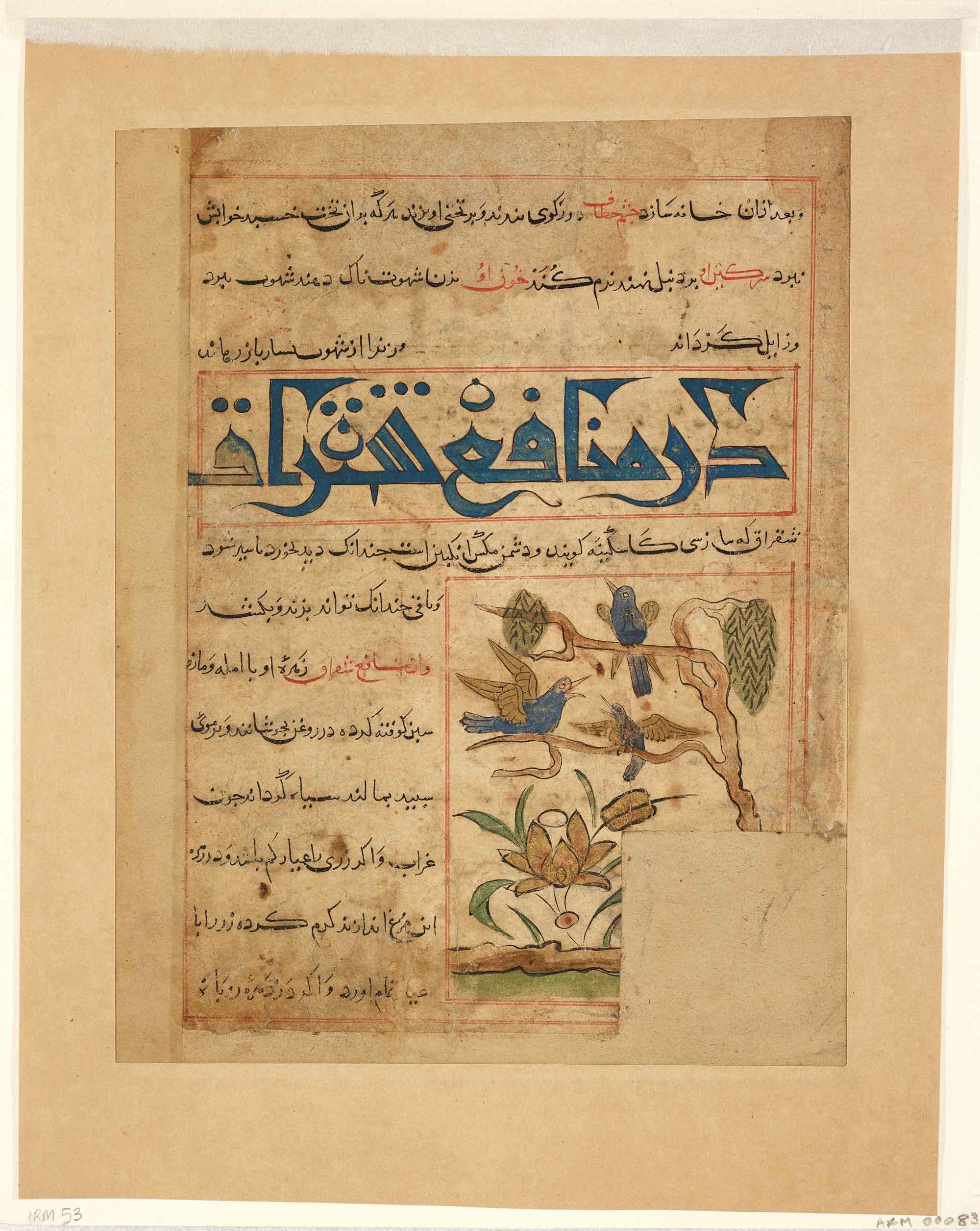Click on the image to zoom
"Shiqraq" (Green Magpie)
Folio from a dispersed Manafi‘ al-Hayawan (The Usefulness of Animals)
- Accession Number:AKM83
- Creator:Ibn Bakhtishu (d. 1058)
- Place:Iran or Iraq
- Dimensions:25.7 x 20.5 cm
- Date:ca. 1300
- Materials and Technique:Opaque watercolour, ink, and gold on paper
The eleventh-century Persian physician Ibn Bakhtishu (died 1058) wrote the bestiary Manafi‘ al-Hayawan (The Usefulness of Animals) following the Aristotelian tradition that lists and describes animal species while highlighting their benefits. This folio is from a dispersed late thirteenth-century Persian copy of Ibn Bakhtishu’s Arabic text. Other folios from the same manuscript are now in major museum collections, including that of The Metropolitan Museum of Art in New York. The painting style seen in this folio also brings together various artistic traditions. By the end of the thirteenth century, book painting under the Ilkhanids (1256–1353) demonstrated strong influences of Chinese-inspired elements seen here in the depiction of twisted trees and the introduction of foreign plant species, including the lotus. One of the benefits mentioned for the magpie (shiqraq) shown here is that boiling its droppings in fat is a good treatment for darkening grey hair.
Note: This online resource is reviewed and updated on an ongoing basis. We are committed to improving this information and will revise and update knowledge about this object as it becomes available.


